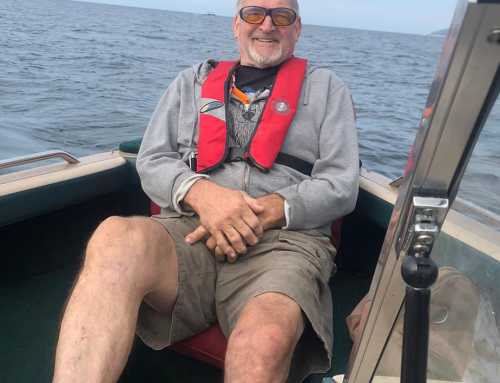Local Rivers:
Fraser River: Tidal and Non-tidal portions of the Fraser – October and November are the last prime fishing months! The water is littered with migrating salmonids (Coho/Chum) making angling fun despite the colder weather. The Sturgeon are plentiful and are fairly easy to hook. Best baits are salmon roe/ hearts, eels and lampreys – remember they are catch and release only, single barbless hooks apply.
Chilliwack/Vedder: Is now slowing as Chinook and Coho are completing their cycle. Both species are dark and beat-up but the Chum are still worth smoking! Best baits are still jigs, fresh roe, spinners and spoons. Steelhead are next!! The Trout are aggressive and plentiful as they are after Salmon eggs. Best baits for Char and Rainbows are single eggs, peach or pink wool and jigs.
Harrison/Chehalis: Is littered with Chum and the occasional Coho which will start in mid November – typical migration time for those big northern Coho. Best baits are shrimp, jigs and roe wool. 2Chum per license and 2Hatchery Coho. Single barbless hooks only!
Local Lakes:
Jones, Kawkawa and Chilliwack lakes are still fishing well for Cutthroat and Bull trout plus White fish. East and West Harrison are giving up Cutthroat and Char in good numbers. Use single eggs, deli shrimp, roe single eggs and krill.
Interior Lakes:
High elevation lakes are now iced over, there are still a few mid elevation lakes producing. Use mayfly nymphs, Cassie patterns, blood worms and leaches. Only a limited amount of lakes can you choose chironomids! Iced over lakes will require standard winter angling methods like marrows, shrimp, single salmon eggs and corn with marshmallows.
Chair – Loren Sherbina
Co-Chairs – Darien Francis, Elaine Ridout-Sherbina
Chironomid Fishing
by Jordan Oelrich
Boat Setup Basics
- Boat (Belly, Pontoon, Pram, Jon, V-Hull)
- Anchor Locks
- Front and Back Anchors (sized according to boat)
- 50ft Anchor Rope
- Quick release Rod Holders
- Seat with Backrest
- Depth Sounder

Basic Gear Requirements
- 9-10ft 4-6wt Single Hand Fly Rod
- Mid-Large arbor reel
- WF Floating Line + 100yds 20lb backing
- Large spools of 10, 8 & 6lb fluorocarbo
- Extra spools of 5-8lb fluorocarbon
- Strike indicators
- Micro Swivels
- Forceps
- Boat Bag
- Throat Pump
- Catch and Release Net
Rod Setup
- Straight shot of 8-10lb fluorocarbon OR tapered leader (personal preference)
- Length according to depth of water
- Self-Releasing strike Indicator (optional)
- Micro Swivel (only used with indicator setup)
- 18-30” 5-6lb fluorocarbon tippet below swivel
- Non-slip loop knows to fly
Finding the Bugs
- Dipping Swallows
- Floating Shucks
- Bugs Actively Hatching
- Fish Moving
- Wind Direction
- Boats
- Lake and Bottom Structure
Finding Depth
- Lake Structure
- Shoals and Dropoffs
- Flats
- Bays

Anchoring
- Use wind to your advantage
- Always use anchors appropriately sized to your watercraft
- Invest in a set of anchor locks
- Uncoated, pyramid shaped lead anchors or bust
- Feed extra ripe before setting your anchors in windy conditions, this allows the pyramids to turn on their side and grab the bottom of the lake
Choosing a Fly
- Judge according to size of shucks if you can find them
- Factor in water temperature (warmer water = typically bigger bugs)
- If your sounder is showing fish are suspended a ways off bottom, chances are good that the bugs they’re eating have already acquired a silver sheen from oxygen buildup in the abdomen
- Fish marking very close to bottom will often be feeding on chironomid larva or very dark pupa
- If you’re on top of an emergence, marking fish but not picking them up then don’t hesitate to cycle through flies every fifteen to twenty minutes

Fishing Effectively
- Don’t fish casts that are excessively long. Unless you’re fishing shallow or clear water with spooky fish, you can fish your indicators within thirty feet of your boat
- If you’re fishing by yourself, always take advantage of being able to fish two rods

Approaching Trophy Stillwaters
- Patience and realistic expectations will make or break you
- Understand your odds, do not lose sight of the rewards on the other end – Do not pick up and leave the lake after an hour of no action, remember that you are fishing for very few, but large fish
- Take into account the size of your tippet and your presentation. You do not need to go heavier than 8 or even 6 pound fluorocarbon
- Do not move location or change flies more than you normally would
The Little Things
- Present your fly downwind so that your line stays straight to your indicator
- Twitch your fly in calm conditions
- Watch for indicator hanging up on the bottom – Watch for other boats hooking fish
- Watch for soft takes, usually in shallow water or calm conditions
- Give each fly 15 minutes, or change depths every 15 minutes
Your Indicator Drops
- You have one chance to stick that hook in place, make it count
- Keep fish away from the anchor ropes
- ALWAYS have an eye on your second indicator, when fishing is on both rods will go off on a regular basis
- Make sure your indicator releases
Throat Pumping Your Fish
- ALWAYS throat pump the first fish or if the fishing is slow to get an explanation
- Carry a small glass vile with you
- If you don’t get a sample on the first 2 pumps, release your fish and pump the next one to avoid stressing the fish too much
- Hold fish lightly, upside down and never bring fish in the boat to pump them
Long-Lining Chironomids
- Make your leader ~ 25% longer than the depth of water you are fishing, cast our and let your fly sink to where you think ‘the zone’ may be using a countdown method, retrieve the fly AS SLOW as possible. Hang on tight because the takes can be violent
Deep Lining
- Use a heavy sinking line (Type 6 or 7)
- Use no more than 4ft of leader
- Cast out the amount of feet you want to fish and let your fly hang vertical below the boat, retrieve the fly very slowly and hold on tight! This is where a lot of break-offs occur
Using a Finder
- Find a depth you like, locate a hatch or wait til you start marking some fish
- Turn depth sounder off when you have started getting fish to save battery power
- Check for lake structure
- Check for varying water temperature
Location, Location Location
- Location can be the difference between an OK day and a banner day, always look for the strong hatches and keep an eye out for good numbers of fish being caught
- Look for swarms of birds, this means you will be on top of the bugs
- Use shoreline objects as markers to remember where it is you were fishing for the next time
Detecting Strikes
- I know it sounds easy, but the indicator or line doesn’t always come alive when you have a bite, sometimes it will dip under the water for less than a second before it comes back up, especially in shallow water
- Hook sets are free, an irregular motion on your indicator deserves one
The Double Header
- Playing 2 fish at one time can become hectic at times, but don’t let it stress you out
- ALWAYS feel out which fish is bigger, put the rod
Common Chironomid Myths
- A foot off the bottom
- 10am – 2pm
- Water temperature
- Big fish don’t eat chironomids
- Bigger chironomids will be easy to see
- May/June are always the best chironomid fishing


